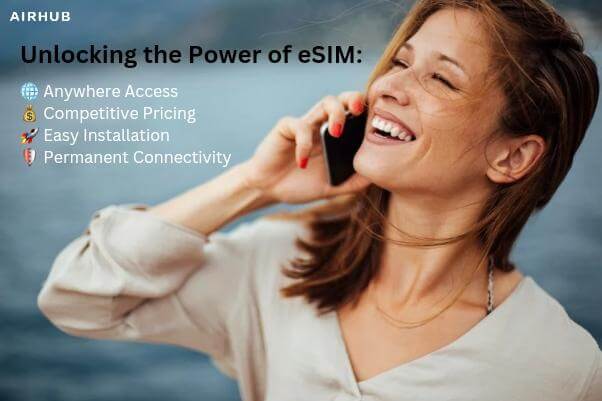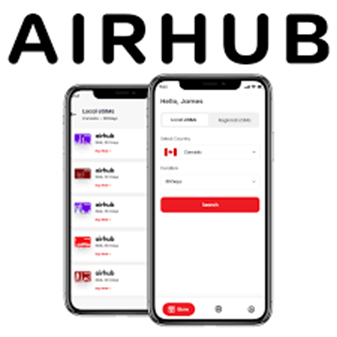Is it even worth switching to a new technology? Physical SIM versus e-SIM
Is it Even Worth Switching to a New Technology? Physical SIM VS eSIM
Since you frequently travel, it is likely that you have been looking for ways to improve your connectivity while you’re out and about. Who wouldn’t desire a better option than paying for a wastful track phone plan or having to find a WI-FI hotspot every time they want to use the internet.
You probably arrived here because we are constantly evaluating the pros and cons of new technology to decide whether it is worthwhile to invest in it. Should you make the move now that aware of eSIM is enhancing the signal quality for worldwide users?
Here we will discuss benefits and drawbacks of both Physical SIM and eSIM.
Which is better? Physical SIM vs eSIM
While travelling abroad, many people have trouble finding a dependable cell service provider and even if they do, they might only require the service for month or less.
They are several mobile service providers who do not currently provide reliable connection for esim compatible devices. The data allowance and expiration date of their prepaid plans also don’t seem to fit a traveller needs.

The Similarities between Physical SIM and eSIM
There is a misconception that Physical SIM and eSIM are completely unrelated technologies that are impossible to compare fairly. Nonetheless, most people would be shocked to learn that they share quite a few commonalities like:
-
They both link your phone to the network of your cell provider
-
They can both be utilised in a wide range of gadgets (not just phones)
-
Both your phone and the type of plan are identified
-
In a dual eSIM phone, they can both be used simultaneously
-
Technically, both of these “SIMs”
Both are SIMs, you read that correctly. In contrast, a SIM card is a chip that may be physically inserted or removed from your phone according to the terms of your carrier plan. Your phone has an eSIM (embedded SIM) which instantly downloads the plan from your carrier.
There are still certain benefits to selecting SIM providers while abroad, even though more tourists may be persuaded to adopt eSIM..
Advantages of Physical SIM cards:
-
SIM are not an innovative mobile technology: For the majority of their data plans, leading mobile providers use SIM.
-
Removable SIM cards: Has the power on your phone died? A SIM card can be put into another unlocked phone with good battery.
-
Physical SIM can be upgraded: You can bring in your SIM card for replacement from your cell operator if the manufacturing of the chip in it is obsolete or if you wish to update the plan.
Disadvantages of Physical SIM card
- Sims are simple to damage or misplace: While handling a SIM card outside of your device, you run the risk of damaging or losing it.
- The carrier plan is linked to SIMs: To switch carriers and change your plan
- Physical SIMs can have only one plan in memory at once: Several plans cannot be stored on a single card
- The hacking of SIMs is simpler: A hacker can easily access your SIM card if your phone is lost or stolen and use it fraudulently.

The Advantages of eSIM
Here are some important advantages of eSIM
- eSIMs are useful: When you have a network connection, you can download them from any location.
- eSIM compete in the market: They have the same pricing as any regular SIM card.
- eSIM are simple to install and use: An e-SIM can be downloaded and installed in a matter of minutes, and you can then use it.
- ESIM cannot be physically lost or destroyed: Because eSIMs are implanted, they are far more difficult to lose or destroy.
The Disadvantages of eSIM
Even though using eSIM may appear to have no drawbacks at first glance, there are few.
- For older phones, eSIM are not available: eSIM can’t be used with earlier phones models because they are relatively new technology.
- Data transmission is more difficult: To recover your contacts, texts and other media, you must download your data from the cloud rather than taking the card out of a broken phone
How to activate eSIM using the QR Code?
- Go to Settings on your device
- Tap on Network & Internet
- Tap the Add icon next to Mobile Network
- Tap Next when asked, don’t have a SIM card?
- Tap Enter Code Manually. You will be asked to enter the QR code information *Turn on your eSIM" under Mobile Network
- Enable Mobile data
- Enable Data Roaming (Please turn off your primary line to avoid roaming charges from your carrier provider when overseas)
- Set up an APN (access point name) on your device if required. If the APN settings are required for your eSIM, you can find the APN details in the eSIM installation details
eSIM Compatible Device
Please review our eSIM support page to determine if your device is compatible a esim list of compatible devices.
Stay Supported, Stay Connected!
